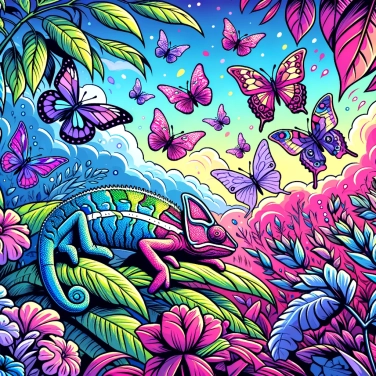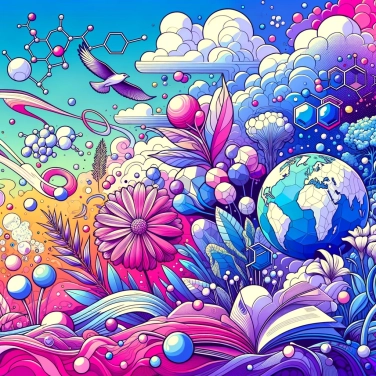Mimicry is an effective survival strategy because it allows an organism to blend in with its environment, providing protection against predators.

Mimicry allows an animal or plant to resemble something else—sometimes a dangerous or toxic species, sometimes simply its environment—and effectively deceives predators. When a predator sees a non-toxic frog with flashy colors, it hesitates to attack for fear of being poisoned. Some insects look exactly like twigs or leaves, becoming nearly invisible to the eyes of hungry birds or reptiles. The result is simple: less risk of being eaten, and therefore better chances of survival. The more convincing the resemblance, the greater the species' chances of escaping the ever-watchful predators.
Mimicry allows for energy savings because mimic species do not need to invest as much in escape or defense strategies. There is less need to run fast or produce costly toxins when simply imitating a dangerous or unappetizing species. This limits expenditures in terms of movement, constant vigilance, or even direct combat. In practical terms, it frees up time and energy for other vital aspects such as feeding, reproducing, or growing. In short, imitating its toxic or dangerous neighbor is a very clever budget that avoids wasting energy resources constantly.
Mimicry allows species to better adapt to their environment, thereby stimulating natural selection. Individuals that effectively reproduce the appearance of dangerous species or their environment gain a real advantage: they survive better and reproduce more. As a result, their genes are favored and passed on to subsequent generations, thereby reinforcing the traits associated with mimicry. Over time, this can even lead to the emergence of new species that are better suited to their habitat. Thus, mimicry becomes a powerful driver of evolutionary adaptation.
Mimicry clearly alters the relationships between species in a given environment. For example, a species using mimicry can deceive its predators or prey, thereby directly influencing their survival and behaviors. These deception strategies create changes in food chains by reducing or increasing certain populations. Some non-toxic species mimic the appearance of toxic species, disrupting predators and teaching them to avoid anything resembling these models. As a result, even predators must become more efficient in their ability to recognize impostors, pushing the entire ecosystem to evolve. Overall, mimicry transforms ecological interactions into a real game of chess, sustainably influencing ecological balance and the power dynamics between species.
Although often very effective, mimicry has its limits. Predators can learn to recognize mimicking species, and certain environmental conditions can reduce the effectiveness of mimicry.
Mimicry is rare among domesticated animals. However, certain imitative behaviors, such as cats or dogs adopting body postures that mimic humans or other species, exist primarily through learning and domestication rather than natural selection.
No, mimicry can also pertain to plants and other forms of life. For example, some plants imitate the appearance of stones or other inedible vegetation to reduce their chances of being eaten.
Yes, among the main types, there is Batesian mimicry (harmless species mimicking a dangerous species), Müllerian mimicry (several dangerous species adopting a similar appearance), and cryptic mimicry (imitation of the environment for camouflage).
Mimicry promotes diversification by encouraging adaptations that allow species to coexist and adapt to various ecological niches. This plays a key role in natural selection, increasing the complexity and richness of ecosystems.
Mimicry is an adaptive strategy through which an organism develops an appearance, behavior, or characteristics similar to those of another species or its environment in order to increase its chances of survival, often by reducing the risk of predation.

No one has answered this quiz yet, be the first!' :-)
Question 1/5